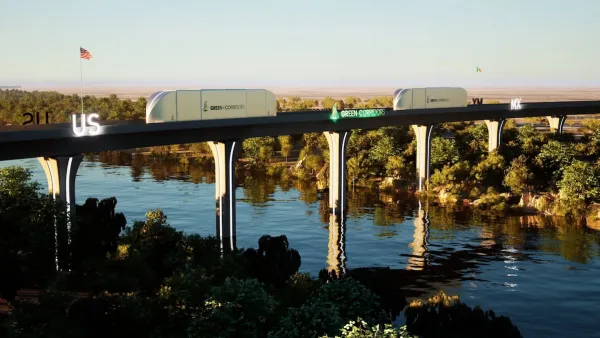In spite of doubts about economic viability, port cities on the Atlantic scramble to make room for mega cargo ships, Curtis Tate reports.
Cities across the East Coast are racing to prepare for an expansion of the Panama Canal, which officials hope will divert transcontinental shipping from the pavement to the sea. Slated for completion in 2014, the expansion will make way for cargo ships that can carry two to three times as many containers as the biggest ships currently on the route.
"I don't know too many ports that have gambled on shallow water that have stayed in the game," said Kevin Lynskey, the assistant director for seaport business initiatives at the Port of Miami. "If we didn't dredge and other people did, we certainly would lose more containers."
Ports on the southern end of the Eastern Seaboard, like those in Charleston, Savannah, and Miami, aren't currently deep enough to handle the new traffic, and worry that they might soon get passed over for larger ports up north. But with an already extensive, well-established rail network connecting the east and west coasts, those on the Pacific doubt the economic benefit of shifting gears.
"Why not just unload all of it here?" asked Art Wong, a spokesman for the Port of Long Beach. "We hope to maintain those kinds of advantages."
But the Southern port cities aren't waiting. State authorities in Flordia, Georgia, and South Carolina are proposing hundreds of millions of dollars in port expansions, drawing on state coffers if their pleas for federal funds fall on deaf ears.
FULL STORY: As states seek funds for deeper ports, will ships come in?

Planetizen Federal Action Tracker
A weekly monitor of how Trump’s orders and actions are impacting planners and planning in America.

Maui's Vacation Rental Debate Turns Ugly
Verbal attacks, misinformation campaigns and fistfights plague a high-stakes debate to convert thousands of vacation rentals into long-term housing.

San Francisco Suspends Traffic Calming Amidst Record Deaths
Citing “a challenging fiscal landscape,” the city will cease the program on the heels of 42 traffic deaths, including 24 pedestrians.

Defunct Pittsburgh Power Plant to Become Residential Tower
A decommissioned steam heat plant will be redeveloped into almost 100 affordable housing units.

Trump Prompts Restructuring of Transportation Research Board in “Unprecedented Overreach”
The TRB has eliminated more than half of its committees including those focused on climate, equity, and cities.

Amtrak Rolls Out New Orleans to Alabama “Mardi Gras” Train
The new service will operate morning and evening departures between Mobile and New Orleans.
Urban Design for Planners 1: Software Tools
This six-course series explores essential urban design concepts using open source software and equips planners with the tools they need to participate fully in the urban design process.
Planning for Universal Design
Learn the tools for implementing Universal Design in planning regulations.
Heyer Gruel & Associates PA
JM Goldson LLC
Custer County Colorado
City of Camden Redevelopment Agency
City of Astoria
Transportation Research & Education Center (TREC) at Portland State University
Jefferson Parish Government
Camden Redevelopment Agency
City of Claremont



























